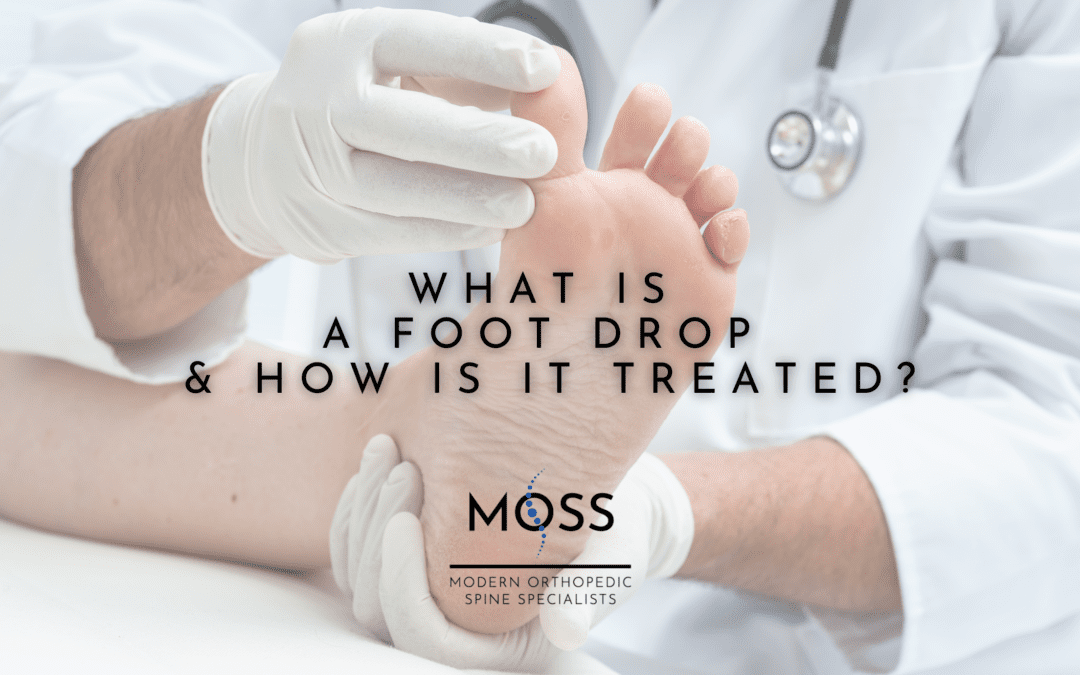Drop foot describes an abnormal neuromuscular condition that limits a patient’s ability to raise their foot at the ankle. It can be treated by orthopedics specialists in a variety of ways, including braces, exercise, and minimally invasive surgery of the spine. During such a procedure, endoscopy is used to assist surgeons. Physical therapy can then help with pain management and also serves to strengthen and reduce common pain points in the neck and back.
Drop foot is a symptom of an underlying concern – not a disease. In addition to difficulty raising the foot at the ankle, the condition is further characterized by an inability to move the foot inward or outward at the ankle or point the toes toward the body. Loss of function may be accompanied by weakness, pain, and numbness.
Common Causes
The most common cause of foot drop is compression of the peroneal nerve, which is involved in lifting the foot. The peroneal nerve can be injured from knee or leg fractures, knee dislocation, or hip or knee replacement surgery. It’s located deep within the lumbar and sacral spine and is a division of the sciatic nerve, primed to deliver signals to muscle groups responsible for foot, ankle, and toe movements.
Other causes of foot drop include:
- Neuropathy
- Herniated disc
- Spondylolisthesis
- Stroke
- Multiple sclerosis
- Muscular dystrophy
- Cerebral Palsy
Signs of Foot Drop
People with foot drop may drag their toes when walking. They may also need to lift their knees in an unusually high manner to avoid dragging and harming their toes. Additional symptoms include tingling feelings in the affected leg and muscle weakness.
Proper Diagnosis Is Key
Proper diagnosis of the culprit behind foot drop is crucial to developing a comprehensive plan. For this reason, the diagnostic process may include multiple tools, including a review of past and current medical histories, a full assessment of symptoms, tests such as magnetic resonance imaging (MRI), and physical and neurological examination.
Treatment Options
The treatment required depends on the underlying cause behind drop foot. A brace or splint that fits into the shoes to stabilize the ankle and foot may be appropriate for some patients. Physical therapy helps with pain management and can also be used to strengthen back and neck muscles. These are necessary for improved posture, which can help a patient regain a normal gait.
Minimally invasive surgery is another option to correct or alleviate the underlying problem. For instance, if nerve compression caused by a lumbar herniated disc is behind a drop foot, a disc removal (discectomy) may be necessary to relieve or decompress the nerve. Endoscopy – the use of a camera – often accompanies spinal surgeries to ensure precision movements.
If you’re experiencing pain, having difficulty walking, or feeling tingling sensations in your legs, it’s time to see a member of our team. We can help care for your body’s spinal system by diagnosing drop foot and its underlying cause. We also treat a range of other conditions, including spinal fractures, sciatica, and myelopathy. Schedule your consultation today and contact The Modern Orthopedic Spine Specialists in Thousand Oaks, California.


Recent Comments